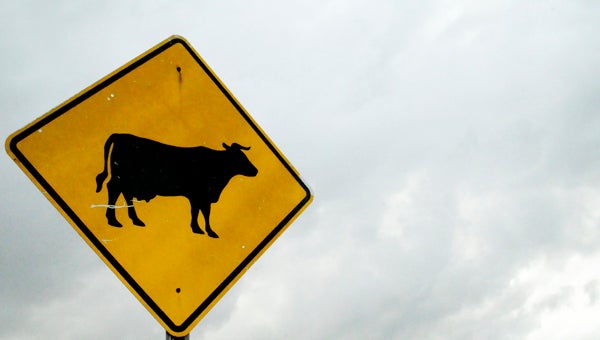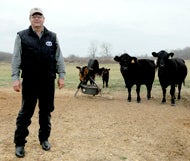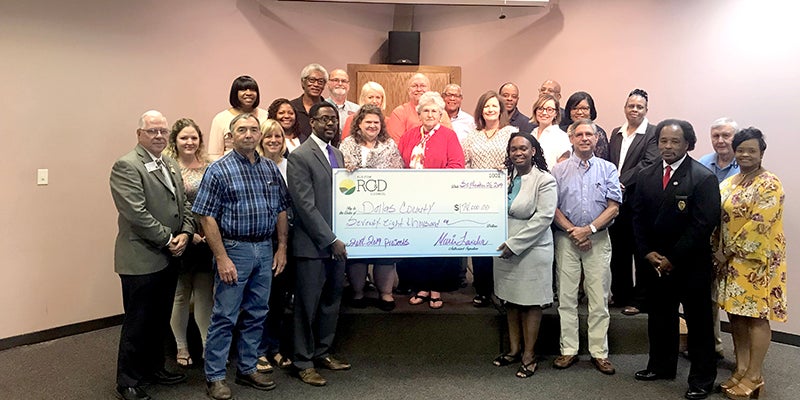Dallas County: ‘This is cow country’
Published 10:33 am Thursday, February 28, 2013

According to the Alabama Cattlemen’s Association, the increased demand in cattle has kept cattle farmers in Alabama profitable. In 2011 alone, 2.35 billion pounds of beef were shipped overseas, which exceeded imports by more than 605 million pounds — a record year. In dollar amount, exports totaled close to $8.07 billion. — Sarah Cook
In Dallas County alone, an estimated 21,000 cows roam the pastures. These cows, according to the Alabama Cattlemen’s Association, account for a $2.5 billion industry in the state.
Jim Holliman, owner of Circle H Cattle Farm in Marion Junction, said if the cattle industry were to disappear tomorrow, Alabama would be in serious trouble.
“This is cow country,” Holliman said of Dallas County and the Black Belt region. “For every 100 acres in Dallas County there are 11 cows — that’s a lot of cows.”
Holliman comes from a long line of cattle farmers. As a fifth generation cattleman, he said his knowledge of the cow industry “goes way back.”
“Most of the cattle here in Dallas County are Simmental-angus crosses,” Holliman explained. “This is the best breed of cow I’ve worked with.”
Simmental cows are a versatile breed of cattle that can be used for beef and dairy. This particular breed is known for it’s rapid growth if fed sufficiently, Holliman explained.
And although these cattle have a dual-use, Holliman said in Dallas County and most of the state, they are primarily used for beef.
“There used to be 67 dairies in Dallas County and now there’s about that many in the whole state,” Holliman said. “We only have one now in Dallas County that I know of.”
Owning and operating a dairy farm, Holliman said, is very labor intensive and that’s why so many ceased to operate in the last several decades.
Most cattle in Alabama are specifically bred for beef, Holliman said, because Alabama has extremely favorable conditions for growing grass, which the cattle eat and covert to protein.
“The whole Black Belt area is good for cattle farming,” Holliman said. “With our heavy clay soils we can grow grass very well.”
According to the ACA, cattle farmers also have the climate needed to excel in forage, or plant leaves and stems. Rainfall averages exceeding 55 inches and a mild climate insures nearly year-round grazing for cattle. These climate advantages, coupled with a wide variety of forage, offer cattlemen the opportunity to wean heavy calves and also to carry these calves past weaning in a stocker program.
“One of the main things is this area can grow grass real abundantly and cattle are the only creature I know of that can convert grass into protein that humans can utilize,” Holliman said.
After keeping the calves for about eight or nine months, they are weaned and then shipped to feed lots in Kansas, Texas and Oklahoma. Alabama has no slaughterhouses, which is why all cattle must be sent out.
And because the demand for beef is constantly on the rise, Holliman said he doesn’t expect cattle exports to decrease anytime soon.
“Regardless of what you hear, beef really is a safe product because there’s so many regulations we have to follow,” Holliman said. “We also have a very good marketing system through Alabama’s 24 auction markets.”
According to the ACA, the increased demand in cattle has kept cattle farmers in Alabama profitable. In 2011 alone, 2.35 billion pounds of beef were shipped overseas, which exceeded imports by more than 605 million pounds — a record year. In dollar amount, exports totaled close to $8.07 billion.
It’s high demands like this, Holliman said, that makes Alabama such a top producer for cattle. In 2007, the state ranked ninth in the nation in the number of farms with beef cows.
“Beef production in Alabama ranks No. 2, just behind chickens,” Holliman said. “Our bulls (male cattle) average about $5,000 per head.”
Although these numbers may look high, Holliman said nationally, cattle production has slowed in recent years. However, the cows that are raised are much, much larger than decades past, he said.
“You have a lower number of cows, but the cows we do have are producing much more beef,” Holliman said, and attributed this change in cow size mostly to genetics and nutrition.
Nationally, cattle numbers decreased 1.93 million to 90,769,000, which is the lowest level since 1952.
Holliman said although these numbers look grim, it shows that the cows that are being produced are more efficient and producing more beef.
“The cattle we do have are more efficient — that’s a good thing,” he said.
And although Simmental and angus are the main breeds in the Black Belt region, Holliman said several other breeds are represented throughout the state including Beefmaster, Brangus, Charolais, ChiAngus, Gelbveigh, Hereford, Limousin, Red Angus, Santa Gertudis and Senepol.
“Also in Dallas County we have quite a few pure-bred breeders that produce seed stock, Angus and Simmental,” Holliman said.
Aside from the “industry side” of cattle farming, Holliman said he thoroughly enjoys what he does, and there’s something special about owning a cattle farm in the Black Belt region.
“There’s kind of a romance to it all,” he said. “I enjoy cattle and just being out with the cows. Being an animal breeder is exciting to me.”
On the farm, Holliman said it’s just him and his wife along with a few employees. Their farm is also part of an extension system with Auburn University, so students travel to Dallas County frequently to learn more about cattle and how to raise them.
“Circle H is basically my wife and I,” Holliman said. “When my son comes home from Texas, then it’s the three of us. We really enjoy it though, with all this land and quiet, it truly is a peaceful lifestyle.”




